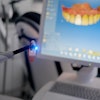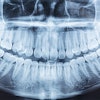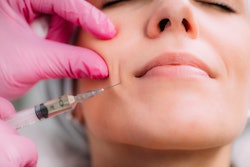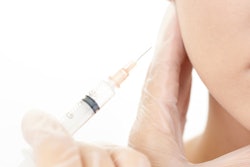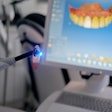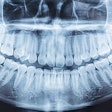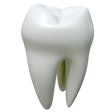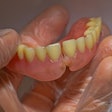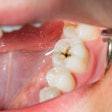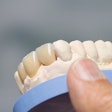
Short-term, low doses of botulinum toxin (Botox) can be used to manage pain related to the temporomandibular joint (TMJ) without causing jawbone loss, according to a study published on September 3 in the Journal of Oral Rehabilitation.
However, more research is needed to determine whether Botox injections at higher doses over longer periods of time reduce muscle and jawbone density, according to the authors.
"Masticatory muscle injections of [Botox] failed to produce clinically significant TMJ bone-related changes," wrote the group, led by Karen Raphael, PhD, from New York University College of Dentistry.
Affecting many
Temporomandibular joint disorders are estimated to affect about 10 million people in the U.S. The cause of these disorders is unknown. They are more common in women, and researchers have begun to explore whether female hormones play a role, according to the National Institute of Dental and Craniofacial Research (NIDCR).
Wearing bite guards, performing oral exercises, and changing diets and habits can help manage TMJ-associated pain, but these approaches do not work for everyone. The U.S. Food and Drug Administration has approved Botox as a wrinkle reducer and to treat certain muscle and pain disorders, including migraines. The drug, which temporarily paralyzes muscles, is in a phase III clinical trial for use in treating TMJ disorders. Though the trial is underway, Botox is increasingly being used off-label.
When Botox has been injected into the jaw muscles of animals, it has caused adverse effects, specifically bone loss. The effects have been less dramatic in humans, but, overall, there is limited evidence on the subject.
The current study, which was partially funded by the NIDCR, included 79 women who experienced facial muscle pain due to TMJ disorder. Of those participants, 35 had received Botox injections between two and five times within a one-year period, and the rest of the women had been treated with other therapies. Those with primary diagnoses of temporomandibular disorders received about 20 units of Botox each at the right and left masseter, headache patients received only about half that dose, and the remaining participants received intermediate doses. Specialized computed tomography (CT) scans were used to measure the women's jawbone density and volume.
Very similar
Jawbone density and volume were similar in the women who had received Botox injections and those who hadn't. In those who had Botox, mean left condylar volume was 1,291 mm3, compared with 1,325 mm3 in those who weren't treated with Botox. Mean right condylar volume was 1,290 mm3 in those treated with Botox, compared with 1,340 mm3 in the other group, the researchers found.
Patients who received higher doses of Botox were more likely to have lower bone density. The authors noted a case report that described a woman who had oromandibular dystonia and was treated quarterly for more than a year with a unilateral dose of 140 units of Botox. Pre- and post-treatment imaging revealed the treatment caused severe unilateral condylar degeneration, according to Raphael and colleagues.
More to learn
More studies are needed to better understand how long-term Botox use could affect jaw muscles and bones and whether it alters bone resorption, the authors noted. Furthermore, if Botox becomes an approved treatment for temporomandibular disorders, a phase IV study should be conducted that includes CT and magnetic resonance imaging (MRI) to monitor bone and muscle changes in patients, they wrote.
"Given potential irreversible impact on muscle, small adverse changes associated with a single treatment cycle may accumulate until they become clinically significant," the authors wrote.

